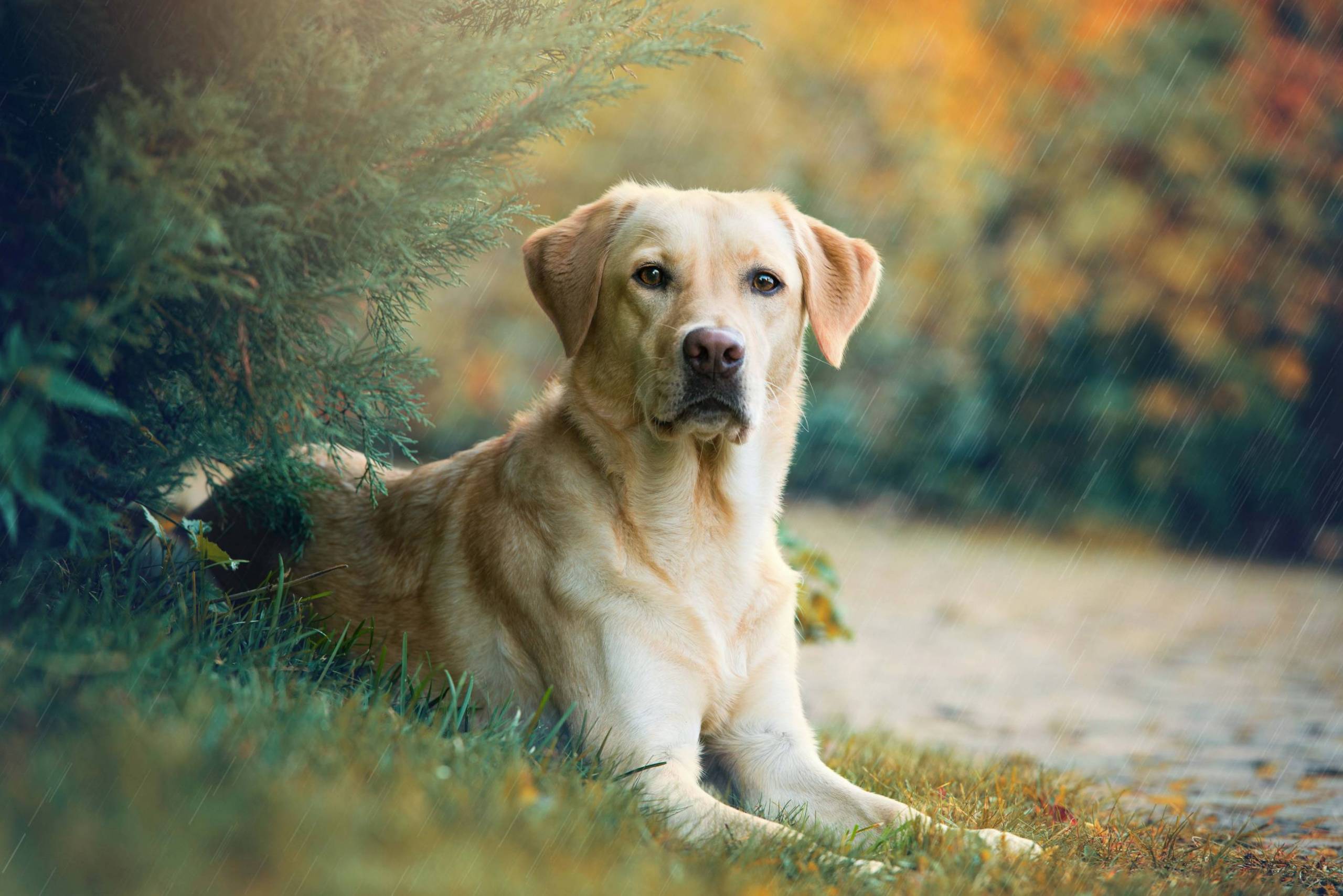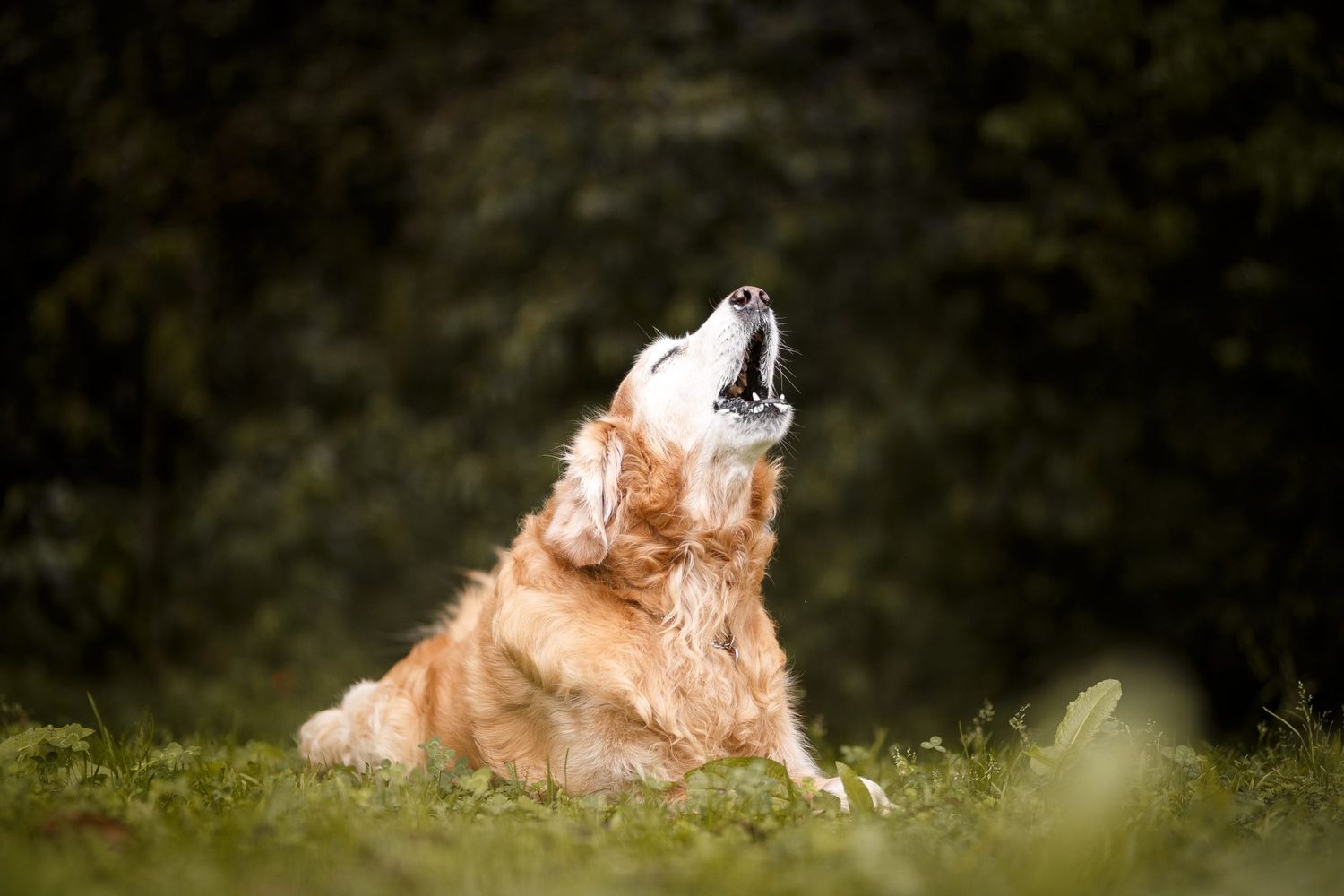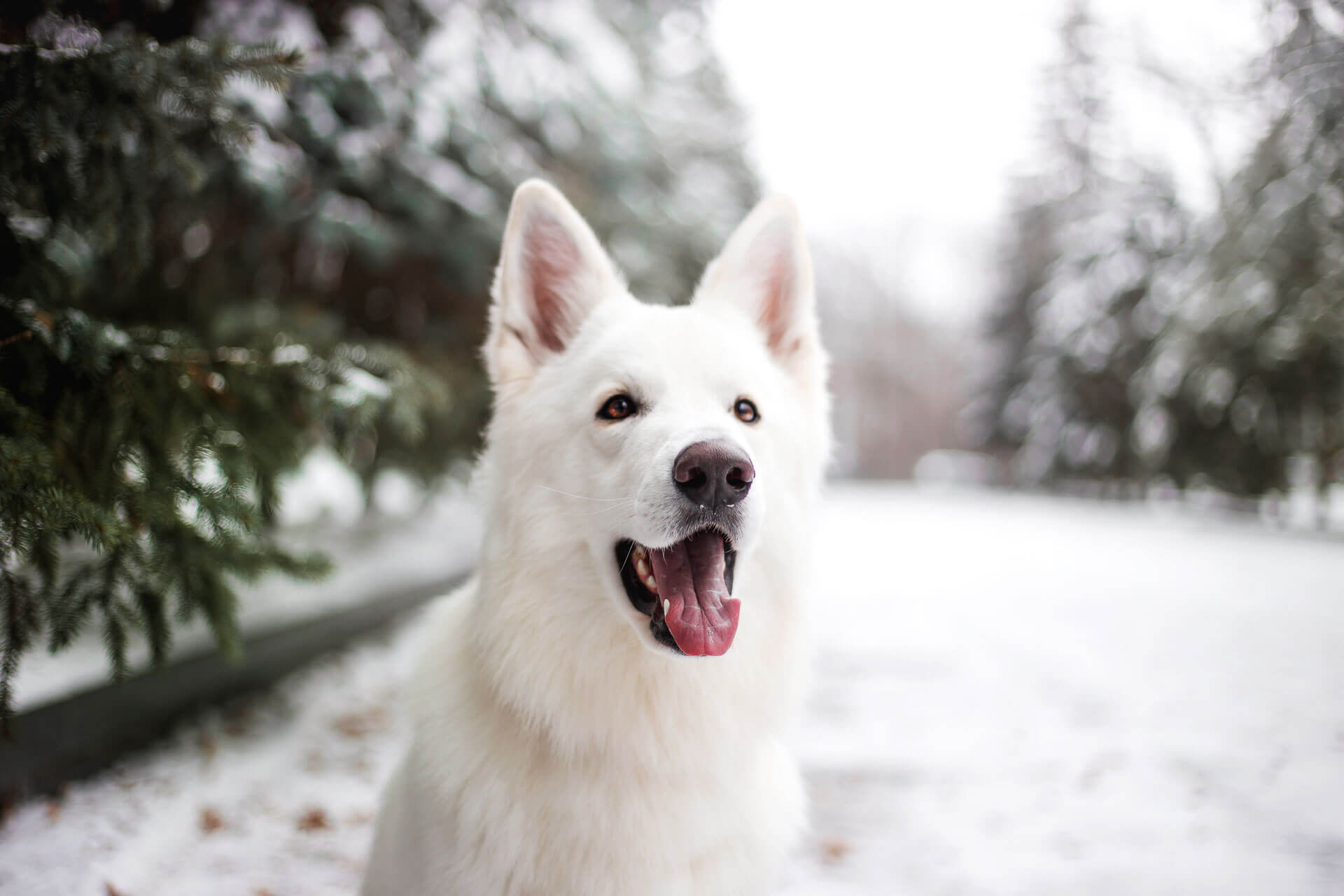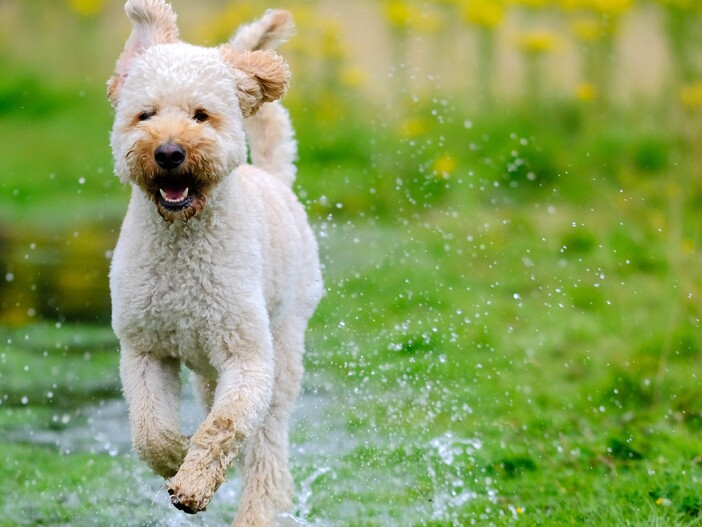Wild dogs are a fascinating group of animals that have captured the attention of humans for centuries. They are known for their unique behaviors, social structures, and hunting techniques.
Wild dogs are generally divided into dogs, coyotes, foxes, wolves, jackals, and dingoes, and there are many different subspecies within each group. They have not been domesticated and live in packs with a nomadic lifestyle.
You are reading: 10 Types Of Wild Dogs
In this article, we will explore 10 types of wild dogs, including their characteristics, habitats, and behaviors.
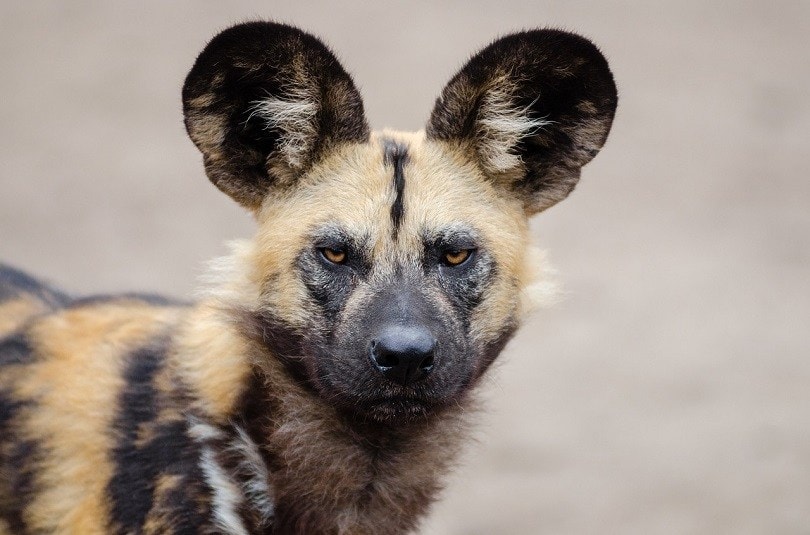
10 Types Of Wild Dogs
African Wild Dog
The African wild dog, also known as the African painted dog or hunting dog, is a wild canine native to sub-Saharan Africa. They are distinctive amongst other medium-sized carnivores, with large rounded ears, long legs, a bushy, broadly white-tipped tail, and a hairy coat with blotches of black, yellow, and white.
No two wild dogs are marked exactly the same, making it easy to identify individuals. They are carnivores and opportunistic predators that hunt a wide variety of prey, including antelopes, warthogs, wildebeest calves, rats, and birds.
African wild dogs are social and live in packs, with the average pack size being between 5 and 20 dogs. Within the pack, there is one dominant male and dominant female, called the alpha pair. The pack works as a group to hunt and take care of the young.
The African wild dog is currently listed as endangered on a global level according to the IUCN Red List. The principal threat to this species is habitat fragmentation, which increases human-wildlife conflict and localized, small population extinction due to epidemic disease.
Australian Dingo
The Australian dingo is a medium-sized canine that is considered a form of domestic dog not warranting recognition as a subspecies, a subspecies of dog or wolf, or a full species in its own right.
They are closely related to the New Guinea singing dog or the New Guinea Highland wild dog, and their lineage split early from the lineage that led to today’s domestic dogs and can be traced back through the Malay Archipelago to Asia.
Dingoes are found in most of Australia, but they are absent in the southeast and Tasmania. They live in a wide variety of habitats including the temperate regions of eastern Australia, the alpine moorlands of the eastern highlands, the arid hot deserts of Central Australia, and the tropical forests and wetlands of Northern Australia.
Dingoes are opportunistic carnivores and their diet includes mammals, especially rabbits, kangaroos, wallabies, and wombats. They are highly adaptable animals being able to survive in most habitats as long as water is available.
Dingoes are generally solitary, nomadic animals, but a small percentage may travel in groups. One of the major threats to the dingo population is human persecution, as they are frequently poisoned, trapped, and shot in agricultural lands and pastures.
New Guinea Singing Dog
The New Guinea singing dog, also known as the New Guinea Highland dog, is an ancient lineage of dog found in the New Guinea Highlands, on the island of New Guinea. It was once considered to be a separate species in its own right, under the name Canis hallstromi, but it is now closely related to the Australian dingo.
The dog is unique among canines, as it is one of the few to be considered “barkless” (hence its common name of “singing dog”), and known for its unusual “yodel”-like style of vocalizing.
Singing dogs have goldish red or black-and-tan coats with white markings, a narrow muzzle, petal-shaped ears, and wide cheekbones. Researchers believe that New Guinea singing dogs probably hunt alone and possibly defend a territory in mated pairs. Although their group numbers may be small, they are highly adaptable and can survive in a variety of habitats.
There are two organizations formed for conserving and preserving New Guinea singing dogs, the New Guinea Singing Dog Conservation Society, founded in 1997, and New Guinea Singing Dog International, a preservation, captive breed, adoption, and pet education group. Both of these organizations are based in the United States.
Dhole
The dhole, also known as the Asian wild dog, Asiatic wild dog, Indian wild dog, whistling dog, red dog, red wolf, and mountain wolf, is a canid native to Central, South, East, and Southeast Asia. They are highly social animals, living in large clans without rigid dominance hierarchies and containing multiple breeding females.
Such clans usually consist of about 12 individuals, but groups of over 40 are known. Dholes are diurnal pack hunters that preferentially target large and medium-sized ungulates. Their diet varies depending on their habitat, but they typically feed on hoofed mammals such as deer, wild pigs, buffalo, and wild goats.
Read more : 5 Best Types Of Alaskan Dog Breeds
When hunting larger prey, they often hunt as a pack, which is capable of taking down prey over 10 times their own body weight. Dholes are highly adaptable and can be found in a variety of habitats, including dense jungles, steppes, mountains, scrub forests, and pine forests.
The dhole is currently listed as an endangered species with an estimated population of fewer than 2,500 adults. One of the major threats to the dhole population is habitat loss and fragmentation due to human activities such as deforestation, mining, and agriculture.
Coyote

The coyote (Canis latrans) is a species of canine native to North America. They are smaller than wolves and are sometimes called prairie wolves or brush wolves.
Coyotes are highly adaptable animals that have colonized cities like Los Angeles and are now found over most of North America. They have grayish-brown to yellowish-brown fur on top and whitish fur on their underparts, with large triangular ears on the top of their head and a long, bushy tail with a black tip.
Coyotes are opportunistic and will eat almost anything, including rabbits, rodents, fish, frogs, insects, snakes, fruit, grass, carrion, and even deer. They are highly intelligent and have keen senses of hearing, sight, and smell.
Coyotes are primarily nocturnal and very opportunistic, and they require minimal shelter to survive, but they will use a den for the birth and care of their young. The adaptability of the coyote and its acute sense of survival make it difficult to identify preferred habitat, although they are typically associated with open plains in the West and brushy areas in the East.
Coyotes are a prominent character in Native American folklore, usually depicted as a trickster that uses deception and humor to rebel against social conventions.
Bush Dog
The bush dog (Speothos venaticus) is a small, stout canid with medium-length, red-brown fur and a bear-like face. They are found in Central and South America, but are very rare in most areas except in Suriname, Guyana, and Peru.
The bush dog is the only living species in the genus Speothos, and genetic evidence suggests that its closest living relative is the maned wolf of central South America or the African wild dog.
Bush dogs are carnivores and hunt during the day, with their typical prey being pacas, agoutis, acouchis, and capybaras, all large rodents. Although they can hunt alone, bush dogs are usually found in small packs. They are highly social animals and appear to be the most gregarious South American canid species.
Bush dogs are equipped for swimming and wading in wet meadows, with their webbed feet. They can bring down much larger prey, including peccaries and rheas, and a pack of six dogs has even been reported hunting a 250 kg (550 lb) tapir, where they trailed the animal and nipped at its legs until it was felled.
Gray Wolf
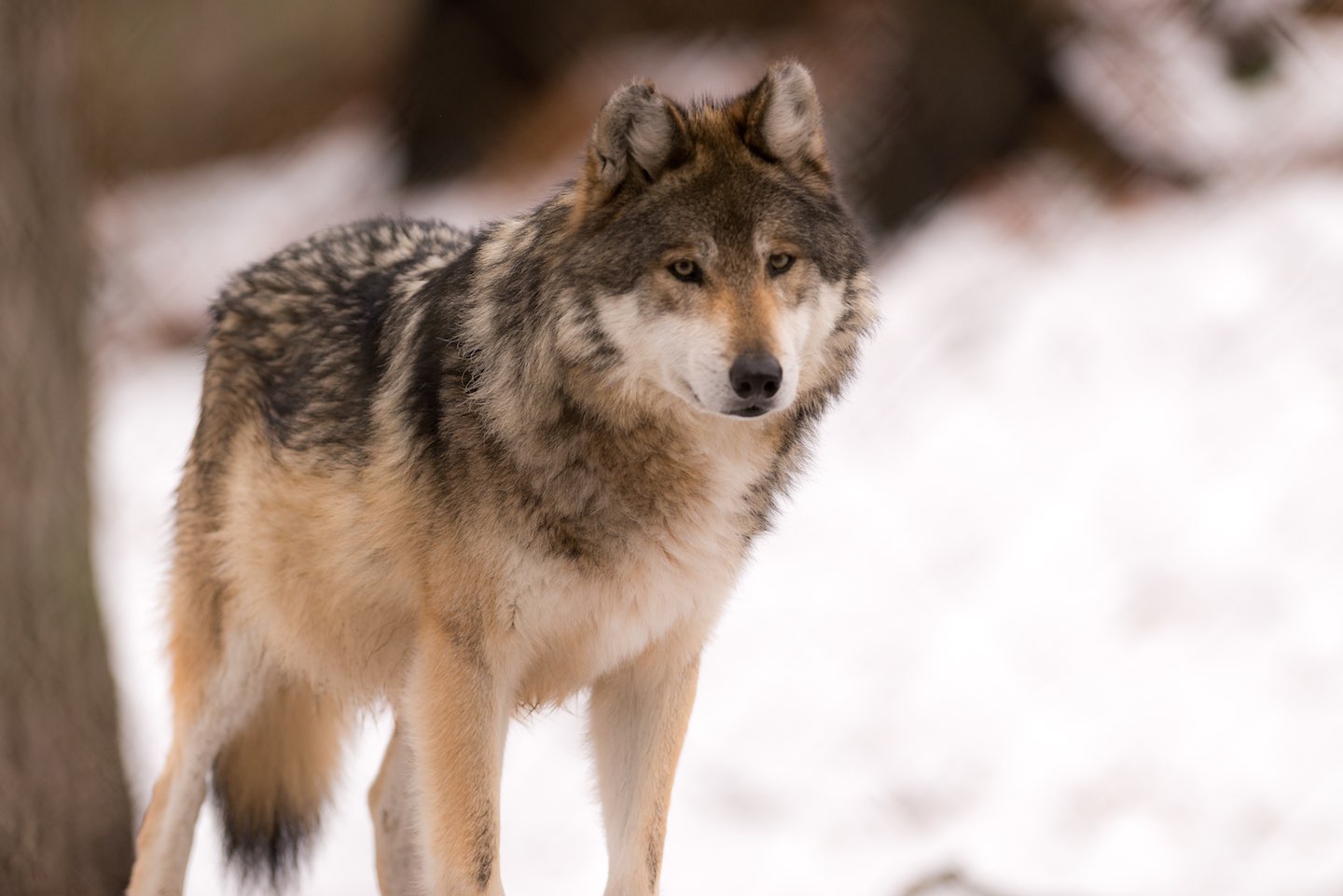
The gray wolf (Canis lupus) is a large canine native to Eurasia and North America. They are the largest wild members of the dog family, with adults ranging in weight from 18 to 80 kilograms.
Gray wolves have a mottled white, brown, gray, and black fur, with subspecies in the arctic region being nearly all white. They are highly adaptable and can be found in a variety of habitats, including tundra, forests, grasslands, and deserts.
Gray wolves are carnivores and their diet consists mainly of large herbivores such as deer, elk, moose, bison, and caribou, which they chase, seize, and pull to the ground. They are highly social animals and live in packs, which usually consist of a breeding pair and their offspring.
The pack works together to hunt and take care of the young. Gray wolves are considered to be a keystone species, as they play a critical role in maintaining the balance of ecosystems.
The gray wolf is currently listed as an endangered species in some areas, including the United States, due to habitat loss, hunting, and trapping.
Red Wolf
The red wolf (Canis rufus) is a canid native to the southeastern United States. It is intermediate in size between the coyote and gray wolf.
Read more : The Top 10 Types Of Terrier Dogs
The red wolf is the world’s most endangered wolf, with an estimated population of fewer than 20 individuals in the wild. They have a reddish cast to their fur, which is where their name comes from.
Red wolves are social animals that live in packs consisting of a breeding adult pair and their offspring of different years, typically five to eight animals. They prey on a variety of wild mammals such as raccoon, rabbit, white-tailed deer, nutria, and other rodents.
Red wolves are most active at dusk and dawn and are generally elusive, avoiding humans and human activity. The red wolf has faced an embattled road to recovery since its listing in the first class of the Endangered Species Act.
The taxonomic status of the red wolf is debated, with some researchers suggesting that it is a recent hybrid of the gray wolf and the coyote, while others propose that it is a distinct species that has undergone recent hybridization with the coyote.
Red Fox
The red fox (Vulpes vulpes) is a medium-sized canid that is widely distributed across the entire Northern Hemisphere, including most of North America, Europe, and Asia, plus parts of North Africa. They have long snouts and red fur across the face, back, sides, and tail, with their throat, chin, and belly being grayish-white.
Red foxes have black feet and black-tipped ears that are large and pointy, and one of the most noticeable characteristics of the red fox is the fluffy white-tipped tail. They are about three feet long and two feet tall.
Red foxes are omnivores and their diet consists mostly of rodents, eastern cottontail rabbits, insects, and fruit, but they will also eat carrion and opportunistically dine on garbage and pet food if living among humans.
Red foxes are solitary hunters who are active at night and are highly adaptable, living in diverse habitats such as forests, grasslands, mountains, deserts, farms, suburban areas, and even large communities. They are known for their resourcefulness and have earned a legendary reputation for intelligence and cunning.
Red foxes mate in winter, and females can deliver anywhere from one to ten kits, which are nursed for 56 to 70 days and are provided with solid food by their parents and older siblings.
Maned Wolf
The maned wolf (Chrysocyon brachyurus) is a large canid found in South America, including Argentina, Brazil, Bolivia, Peru, and Paraguay. It is the largest canid in South America, weighing between 20 and 30 kg (44-66 lb) and standing up to 100 cm (39 in) at the withers.
The maned wolf has long, thin legs and a dense reddish coat, which gives it an unmistakable appearance. It is a crepuscular and omnivorous animal adapted to the open environments of the South American savanna, with an important role in the seed dispersal of fruits, especially the wolf apple (Solanum lycocarpum).
The maned wolf is a solitary animal, but it may form loose associations with other individuals. It is most active during the early morning and late afternoon, but its activity pattern is more related to the relative humidity and temperature, similar to that observed with the bush dog (Speothos venaticus).
The maned wolf is an important seed disperser, and it is known to eat small mammals such as rabbits, rodents, and young viscachas, as well as pacas and agoutis.
Insects, reptiles, and birds are also a regular part of its diet, but it also eats fruits, sugarcane, and other plants. The maned wolf is currently listed as near threatened on the IUCN Red List.
FAQS
1. What are the 10 types of wild dogs?
The 10 types of wild dogs are African wild dog, Australian dingo, New Guinea singing dog, dhole, coyote, bush dog, gray wolf, red wolf, red fox, and maned wolf.
2. Where are wild dogs found?
Wild dogs are found all over the world, but the specific types of wild dogs are found in different regions. For example, the African wild dog is found in sub-Saharan Africa, while the maned wolf is found in South America.
3. What do wild dogs eat?
Wild dogs are carnivores and their diet varies depending on their habitat. They typically feed on small mammals such as rabbits, rodents, and deer, but they may also eat insects, fruit, and carrion.
4. Are wild dogs dangerous to humans?
Wild dogs are generally not dangerous to humans, but they can become aggressive if they feel threatened or if they are protecting their young.
5. Are any types of wild dogs endangered?
Yes, some types of wild dogs are endangered, such as the African wild dog, red wolf, and maned wolf. The main threats to these species are habitat loss, hunting, and trapping.
6. Can wild dogs be domesticated?
Wild dogs have not been domesticated and are not suitable as pets. They have a nomadic lifestyle and live in packs, which makes them unsuitable for domestication.
Source: https://petstutorial.com
Category: DOGS


